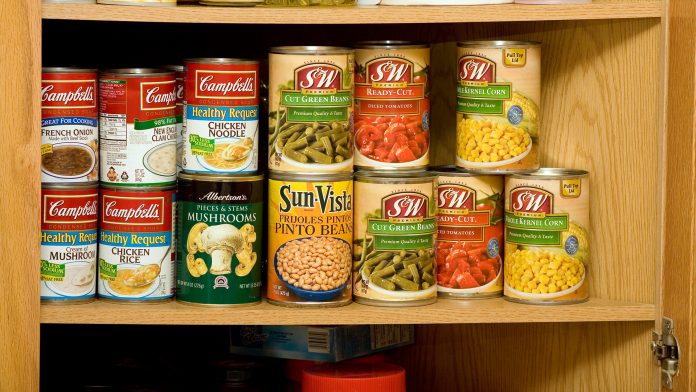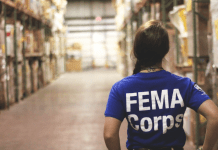Storing food is a big part of making arrangements. And if you have the land and money to grow your own crops, you have to expect the worst-case scenario of losing all you’ve grown, and that means getting enough food in stock to last before you can grow some more. In a nuclear situation, you’ll have to spend weeks in a shelter, and when you get hungry, you can’t nip out to pick some corn. Your crops could be destroyed by a storm or hungry refugees could loot them when you are asleep. When you don’t have a big grocery store you aren’t really prepared.
The trouble is, it’s not easy to store the food. After the first farmers started to grow surplus crops about 10,000 years ago, maintaining food for future use has been one of the greatest challenges facing humanity – and the consequences of getting it wrong are severe. If you’re fortunate, a mistake means wasted food; if you’re not, it can actually mean lethal poisoning of the food. It is important that the right food is stored and properly looked after.
Related: These Are The Only 10 Foods That I Would Stockpile
But on the internet, there are plenty of suggestions that looks fantastic but won’t help you survive. Some people might build food stores that would not be the asset they thought they would be when SHTF. Below are the eight worst food storage myths for helping you prevent risky mistakes:
1. All I need is freeze-dried food
Freeze-dried meals are perfect, if it’s individual camping rations such as Mountain House or one of the bulk emergency food containers you can quickly find online. They are quick to prepare – just add hot water – and fill their bulk with a lot of energy and nutrients. Some of them, too, taste fairly appropriate.
At the other side, for a long time, you don’t want to be eating anything else but freeze-dried food. These are highly processed for a start, and use lots of preservatives to give them their long shelf life. They need plenty of water to prepare too. The food itself may not be heavy and voluminous, but the amount of water required to make it into meals is.
Definitely, your grocery store will contain some freeze-dried food; if you have to bug it out it is best to catch and take it with you. Nonetheless, there is plenty to worth a week. Don’t rely on it for the bulk of your diet for survival.
2. OK then, all I need is canned food
Canned food is another common commodity to store, and it’s quite a good choice again. Canned food lasts for years, it’s typically very durable and it’s not expensive; you can pick it up in any discount grocery store at a low price. Many preppers stock up on a significant quantity of canned food. Yet, is this all you need? No, they aren’t.
Modern canning methods preserve a lot of nutrients, but not all of them. Canned foods are also poor in vitamin C, which is not reacting well to heat treatment. They begin to lose more nutritional value as the cans get older, and the taste and feel can also deteriorate.
Related: Quick and Easy Survival Candy Recipes
The best use for canned food is to build up a stock of simple ingredients that can be eaten cold when needed, or used as the basis for a properly cooked meal. Opt for canned vegetables and meat rather than full meals – they can be blended together to provide more variety. A ravioli will still be ravioli, but canned stew of beef, corn, peas, and beans can be turned into several meals.
3. Fine, I’ll store a load of wheat instead!
And if freezing and prepared meals aren’t a complete solution, how about going back to basics and store a lot of wheat? It’s one of the oldest storable foods, after all, and it can be converted into many items with a bit of effort – including the classic staple, bread.
It definitely makes sense to add some wheat to your stockpile – if you have the expertise and equipment to process it. Alas, a lot of people don’t. Also, it’s not ideal if you’re forced to live in extreme conditions, even after a nuclear attack in your bunker. Even if you’ve got the machinery in your bunker for grinding wheat, it’ll fill the place with dust. This is not only disagreeable; it is risky. A single spark might be enough to ignite the dust and set off a strong enough explosion to kill your bunker and everything – and everyone – inside it.
Store some wheat in rodent-proof containers so you can make bread and other meal based foods when you can grind it. However, do not depend on it as a big part of your diet.
4. Beans, then
Dried beans, for a whole range of good reasons, are a popular staple in prepper stores. They are durable, less susceptible to rodents and other pests than wheat or flour, can be used in a wide range of recipes, and they are a good source of energy and protein. There are still many people who believe they will last pretty much forever.
Okay, that is not exactly so. Beans last for a very long time, but finally they get so dry that turning them back into usable food requires some serious dedication. Even the canned ones in a pressure cooker can get tough enough to require some time. If you don’t have a pressure cooker, consider simmering them with a tablespoon of baking soda added for every three cups of water for three hours.
Related: How to Make a Nutritious One-Year Shelf-Life Vitamin Bar for Your Stockpile
5. Once I have X months of food, I’m prepared
You will relax once you have determined how much food you need, and stocked up. Just right? No, not that fast. Just having the food isn’t enough; you also need to maintain your store and make sure you have everything you need to turn it into nutritious meals.
Food stocks need to be periodically inspected to ensure nothing deteriorates. Check packaging for damage or signs of pests – particularly cans. If you buy foodstuffs, recycle canned goods; if you buy canned corn, add it to your inventory and take the oldest cans to use from there. Therefore, you will know that the oldest food is good, when replacing it with new food.
You need to learn what to do with the food, too. Will it be used to prepare the recipes that you and your family really want? Is anyone allergic to any of the compounds? Can it be easily prepared with the utensils and facilities you’ll have available after the SHTF? Don’t just buy whatever food is the cheapest; have a plan for post-apocalypse meals.
6. I can store my food supply anywhere
It’s tempting to stuff extra food in some odd corner, but in the long run it may not add much to your reserves. And long-lived food requires proper stockpiling. High temperatures can cause texture, taste and nutritional value to degrade. Conditions of freezing will burst on containers. Cans rust in the humidity.
They need to be tested if you find rusted cans amongst your supplies. If it is possible to sweep off the rust to reveal the metal underneath, it should be perfect. Heavier rust may mean the opening of tiny holes, letting air into the can and setting the stage for a dangerous bout of food poisoning – throw it away.
7. I know how long my food will last; the expiry date is printed on it
Almost every food now comes with an expiry date printed on the packaging, and most people take it as a reliable indicator of how long it can be stored safely. When you’re new to prepare and start building a food stock, it’s normal to look at the dates of expiry and choose food with the longest to store.
The problem is, the dates of expiry are only a very rough guide. They are usually very conservative so food that is still safe to eat is long past the expiry date. These are also dependent, on the other hand, on the food being stored in ideal conditions. If exposed to changes in temperature, moisture, sunlight or pests it can deteriorate much more quickly.
Food that is past its expiry date usually won’t become harmful until air gets into the packaging, but it can lose its taste and texture and become less nutritious. Do store food in the best possible conditions – a well ventilated root cellar is ideal.
8. It’s emergency food; It doesn’t matter how it tastes
You can eat pretty much anything if you are hungry enough. Also, the most picky eater will begin losing their preferences as the rumbling out of their stomach grows louder. This can however be pushed too far. Food that no one likes could provide vital energy and nutrients, but it won’t do anything for morality – and when you’re in a situation of life or death, morality has a tremendous impact on whether you make it or not.
Related: 12 Essential Things to Buy Before the Second Wave of COVID-19
It might be tempting to pick up a load of food that you’re not too keen on if it comes at a tempting price. But don’t jump in. Consider of how you’re going to look when you eat it for the tenth day in a row. The aim of your food storage is to keep you safe and well-motivated, so make sure that it can supply you with food that you really want.





















